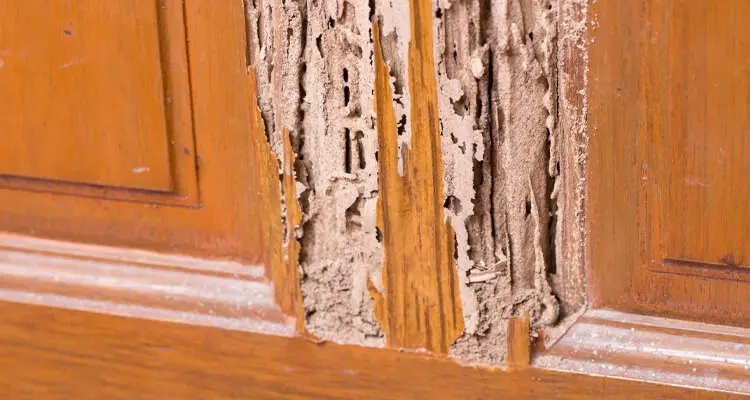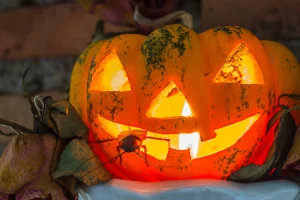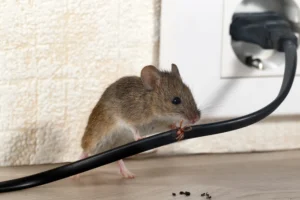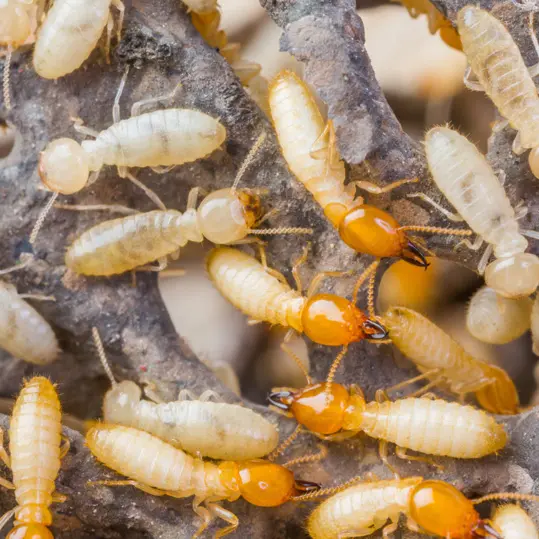Termites cause more than five billion dollars in damage to homes and businesses around the globe every year. These destructive insects reside in all 50 US states, including in the Collinsville, IL area.
What are termites?
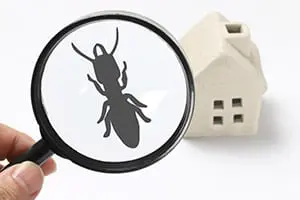 Termites are small, translucent, ant-like insects that thrive in damp, dark environments and feed on organic materials like wood, cellulose, and newspaper. The average termite can consume 1/2 ounce of organic material in a day. That’s because they don’t sleep; they are continually eating and building their colony. While a 1/2 ounce may not sound like a lot, consider multiplying that number of hundreds or thousands of insects every day.
Termites are small, translucent, ant-like insects that thrive in damp, dark environments and feed on organic materials like wood, cellulose, and newspaper. The average termite can consume 1/2 ounce of organic material in a day. That’s because they don’t sleep; they are continually eating and building their colony. While a 1/2 ounce may not sound like a lot, consider multiplying that number of hundreds or thousands of insects every day.
Signs that termites have moved into your home
Fortunately, termites are slow eaters. Being alert to the symptoms of a termite infestation can save your home from sustaining significant damage.
1. Mud tunnels along your foundation.
Termites love moisture and dampness. That’s why they often enter your home via pencil-like mud tunnels that connect the ground with the interior of your home. These tunnels keep them out of the harsh summer sun. Keep an eye out for these thin, tube-like structures near the base of your foundation.
2. Piles of wings.
Another sign that you have termite problems are piles of discarded wings in corners of attics, basements, or on the ground near your home. Termites only fly when they are mating and drop their wings after the season has ended.
3. Swarms of gnat-like insects, especially around the base of your foundation.
Termites are swarming, social insects, so you’ll often see groups of them swarming near where they are entering your home.
4. Beams that sound hollow when rapped.
Termites tend to burrow into wood and eat from the inside out. That’s why the damage they are doing isn’t always apparent at first glance. However, you can tell there’s a problem when a previously-solid beam or joist sounds like it is hollow when you knock on it.
5. Pinpoint holes in drywall.
It isn’t just wood that interests termites. They also enjoy consuming cellulose insulation and drywall. If you look closely, you can see tiny, pin-like holes in the drywall where they exit and enter the wall.
6. Maze-like patterns in floorboards, furniture, and beams.
Of course, one of the hallmarks of a well-established termite colony is the web-like pattern they leave behind as they eat their way through the wood in your home. They are indiscriminate and will happily consume flooring, furniture, and paneling as well as structural beams and joists.
Tips for preventing termites from invading your home
There are several things you can do to keep termites away from your home or prevent them from returning.
1. Avoid putting wood mulch near your foundation.
Since termites thrive in dark, damp places with access to organic material, laying mulch against your home’s foundation is like setting out a welcome mat for termites. Better to use alternative materials like cocoa shells or stones, or keep your flower beds well away from your house.
2. Keep bushes and trees away from your home and well-trimmed.
Landscaping located right against your home is another welcoming sign for termites. They can travel from trees and bushes near homes to the interior of structures, whether at the base or treetops.
3. Fix and clean up any moisture issues quickly.
 Moisture is an essential element in keeping a termite colony alive and thriving. If you’ve had a pipe burst during the winter or a tub that’s overflowed, make sure to clean up the mess thoroughly and fix the issue promptly. Even a minor drip behind your bathroom sink or condensation from your room air conditioning unit can be an invitation for termites.
Moisture is an essential element in keeping a termite colony alive and thriving. If you’ve had a pipe burst during the winter or a tub that’s overflowed, make sure to clean up the mess thoroughly and fix the issue promptly. Even a minor drip behind your bathroom sink or condensation from your room air conditioning unit can be an invitation for termites.
4. Seal gaps around your foundation.
It would help if you made it a habit to inspect your foundation each spring and fall for cracks that may have formed over the past six months. Even a small fissure can be an enticing entry point for termites. Use quick-drying cement or mortar to seal up these gaps.
5. Store your firewood well away from your house.
If you have a wood-burning fireplace or wood stove, it’s tempting to pile your firewood right outside the door so that you don’t have to walk very far in the cold weather to refill your indoor wood rack. However, just like wood chips for mulch, firewood can offer a significant food supply for termites.
To learn more about preventing termites from setting up residence in your home or to schedule an appointment for a pest control specialist to evaluate your home, visit bradypest.com or call us today at (insert contact info). We’ve been helping Collinsville and other southwestern Illinois residents with their pest control needs for more than 20 years.


